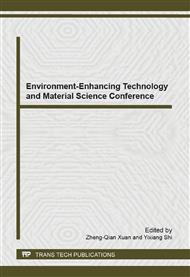p.61
p.65
p.69
p.73
p.77
p.81
p.91
p.99
p.105
Comparison of Solvent-Casting and Melt-Compounding Blended Biomedical (Polylactide)-(Polyethylene Glycol) Mixture as Drug Carrier
Abstract:
For the purpose of drug carrier and delivery, the polylactide was modified by polyethylene glycol blending with the weight percentage of 80/20 by two methods: solvent-casting and melt-compounding. Characterizations of X-ray diffraction, Scanning Electron Microscope and degradation experiments have been done to study the crystallization, miscibility and degradation behavior. The melt-compounding provides a better miscibility associated with longer degradation time, however the heating procedure effects the polymers. Because of the heating and cooling cycle, the polymers had an opportunity to crystalize and the crystal peak can be seen in the XRD results. While the solvent-casting avoids the high temperature experience of blend with an amorphous state, and provides lower miscibility and short degradation time. These significant features will be considerable factors in drug carrier design.
Info:
Periodical:
Pages:
99-104
Citation:
Online since:
August 2014
Authors:
Price:
Сopyright:
© 2014 Trans Tech Publications Ltd. All Rights Reserved
Share:
Citation:


